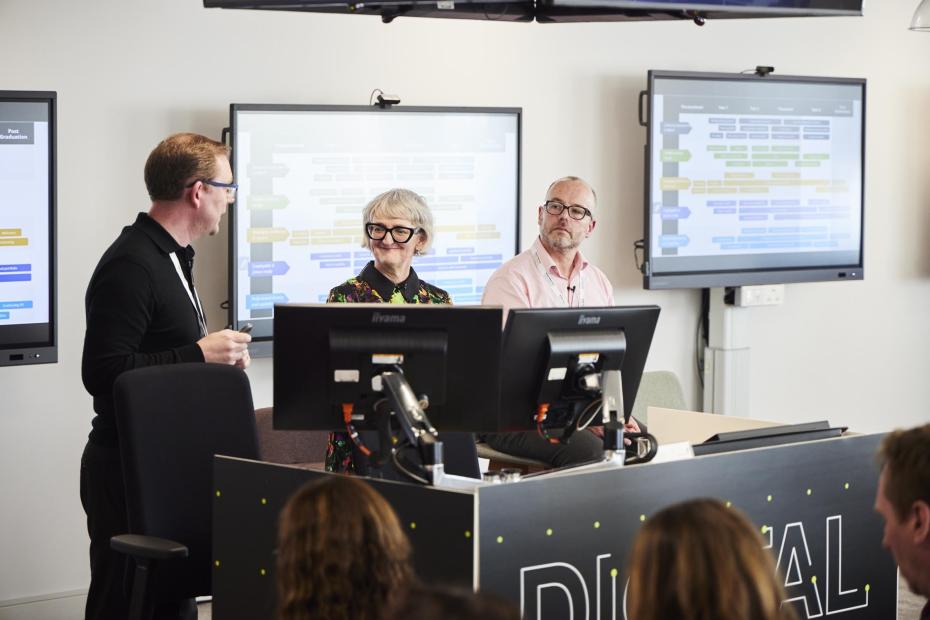
How ‘service learning’ can improve outcomes for students, educators and local communities

When teaching courses that bring together students from different disciplines with varied prior knowledge, classroom learning alone is not always enough. Service learning, which involves students learning while actively participating in community-based projects, can be an effective solution. This approach has been adopted by Siam University in a course looking at the economics of sustainable development, which is mainly taught to first-year undergraduate students from a range of subject specialisms. Service learning enables the students to link their studies to real-world issues, to develop a sense of social responsibility and help address a community need or challenge.
The key components of this learning process involve students, the instructor, and the community members forming a collaborative environment where they “co-create, co-design, co-produce and co-reflect” to find solutions to specific challenges.
How service learning works
It begins with the instructor briefing students on the different community networks that maintain collaborative partnerships with the university. The students can then investigate further to select a community to work with, according to their specific area of interest, and then study the problems that community seeks to address. Typically, these revolve around challenges the community may not be proficient in handling, such as marketing and packaging local products or generating innovative new projects from available resources.
The instructor then sets a timeline and conditions for activities that allow students to apply their theoretical knowledge for the benefit of the community. This might be for students to work in groups of five, completing the project within two months.
- Resource collection: Pedagogies to reinvigorate your teaching
- Community-engaged learning: a pedagogic approach to civic outreach
- Resource collection: How to be a civic university post-pandemic
From the outset, students must engage with a community to identify its needs and challenges. Once students get to know and understand the community within which they are working, they can propose projects aligned to local needs, designed to address key problems or drive development. Subsequently, they present findings and proposals in class and engage in discussions about suitability and feasibility with peers and the instructor, who should act as a project adviser. Students are expected to analyse and apply core concepts such as the Sustainable Development Goals (SDGs), the Thai government’s Bio-Circular-Green Economy (BCG) model, and sufficiency economy philosophy to their project. They should also talk to and solicit feedback from the community members to confirm the practicality and potential benefits of the proposed projects.
One successful example involved a student collaboration with the Lert Suksom Community, located next to a canal in Bangkok, which faces issues with mosquitoes and an excess of pandan plants. Students adapted the BCG Model, which they learned about during their coursework, to propose using surplus pandan to create a nasal decongestant inhalant liquid, which improved breathing and provided pain relief. They also designed the product packaging. In addition, students suggested the community manufacture mosquito repellent spray from surplus homegrown vegetables.
Throughout the project, the instructor provides theoretical knowledge, offers guidance, monitors progress and supports the establishment of positive relationships and student-community involvement.
Students oversee such projects to completion, when they are asked to reflect on the learning experiences gained throughout the process, with input from the community and instructor. The reflective process involves the following steps:
1. Self-assessment of learning: students reflect on what they have learned from the project, what they have learned about themselves, and changes that occurred after completing the project.
2. Community assessment of learning: reflections are gathered from the community, capturing their feelings and any changes they have experienced as a result of students’ involvement in the project.
3. Instructor assessment of learning: the instructor evaluates the project, its content, and summarises the outcomes based on the students’ presentations and project summaries.
Laying the foundations for service learning
Taking the Lert Suksom Community in Bangkok as an example, university educators are involved in continuous development with this community and have formed strong relationships over a number of years. This means the community has a better understanding of what students are setting out to do and will provide opportunities for the students to participate in hands-on activities like the projects described above.
This benefits all three parties. The students gain skills from practical experience, the community gets support with development and problem-solving, and educators can extend the project into research or academic articles.
Important factors for success in service learning include:
1. Put students at the centre: give students the freedom to make choices, take part in decision-making and engage in hands-on activities on their own.
2. Set a clear framework: educators must provide a well-defined framework and conditions for the social service project, offering knowledge, support, encouragement and freedom for students to think and act independently and apply classroom knowledge to real-life situations.
3. Community openness and good relationships with educators and students: foster a supportive and collaborative atmosphere in which all participants co-create, co-design, co-produce and co-reflect through the learning process.
These projects result in students gaining a better understanding of subject matter through real-life experience, acquiring valuable skills such as teamwork, problem-solving and communication, and improving well-being as they develop positive relationships with the community, boosting empathy, compassion and a willingness to support others.
Tachagorn Chansema is a faculty member in the general management and entrepreneurship department in the Faculty of Business Administration at Siam University.
If you would like advice and insight from academics and university staff delivered direct to your inbox each week, sign up for the Campus newsletter.


